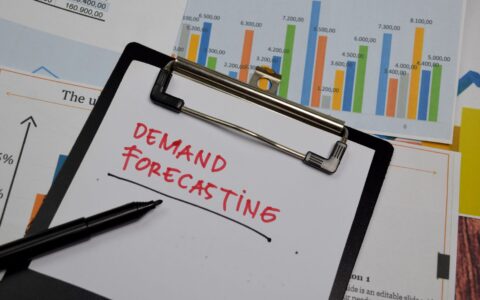
Understanding that the supply chain is guided by indicators, data, and statistics, to work in the best possible way is nothing new. When automating these processes, the use of statistical methods can be of great help. In this post you will understand what statistical method is and how it can be applied in the supply chain.
What is statistical method?
Statistical method is a simplified representation of a complex process, created to streamline the quantitative analysis of all the variants that are involved in a process.
In other words, the function of the statistical method is basically to use data to study a problem. Then, solutions and insights can be generated, always focusing on delivering improvements and optimizations.
It sounds complicated – in fact it is – but, in practice, this methodology aims to simplify certain phenomena, so that they can be studied and analyzed more objectively, using some predetermined parameters.
A phenomenon, in this case, is any event that can be analyzed using statistical data. For example, manufacturing of a product is a phenomenon, and the manufacturer can use consumption statistics to make the manufacturing process more efficient and in line with demand.
However, we must emphasize that statistical method is not just a numerical simplification. Gathering data is not applying a statistical methodology: an analysis must be made of everything that has been collected, so that the analyzed data can allow pertinent conclusions.
Example:
A statistical method is especially useful when there is no feasible way to test something in the real world through the so-called experimental method.
Let’s imagine a company is looking to increase its portfolio and bring a new product to market. There isn’t a way to “simulate” this type of situation, as the company would need real data to know whether or not to invest in that particular product.
To have greater assurance, it can conduct market research, applying the statistical method to analyze competitors, the profile of potential customers and the market segment where it wants to enter, among other data.
Note that these are real elements – the competitors, the customers, the market itself – simplified so that they can be interpreted as numbers and data. This is the idea behind statistical method: make it easier to view variables, so that the analysis work is more effective.
7 statistical method stages
Like any methodology, statistical method has a modus operandi, which must be respected to achieve the best results.
The stages that comprise statistical method are as follows:
1 – Problem definition
First of all, you must have a clear definition of the problem that must be solved through statistical analyses. In the case of the supply chain, the problem can be, for example, conducting an assertive purchase order, without product shortages or excesses.
2 – Planning
At this stage, you must stipulate how to collect the data that will be part of the study. The work to be done depends on the goal you want to achieve. You must pay special attention to the choice of questions and how they are drafted, so that the answers are as expected. It is worth mentioning that, in most cases, internal and external data will be needed.
3 – Data collection
This is the most operational step of the process, that is, actual collection of information. You must also consider the quality of the sources, as well as the frequency of collection. Will the study be continuous, periodic, or occasional? This varies according to the study object.
4 – Data review
Once the information has been gathered, it’s time to check for errors or inconsistencies that could affect the final result. If data was collected through questionnaires, for example, it must be verified whether the answers obtained are in line with the study needs.
5 – Data organization
Once the data has been sorted, the next step is to compute and organize everything. At this stage, it is important that everything is separated according to a logic that streamlines the analysis activity. Here you can also summarize what is most relevant, which will help in the next step.
6 – Data presentation
The listed considerations based on data organization will be transformed into a presentation that facilitates understanding and visibility. It can be tabular – focused only on numbers – or graphic – using tables and infographics to make reading more pleasant.
7 – Data analysis and interpretation
The last stage is the most important in the statistical method process, as well as the most delicate. At this point, everything that was collected, tabulated, and presented will be turned into resolutions and insights that can be useful in solving the problem that was defined in the first step.
Statistical method in the supply chain
Statistical method has great value if applied to the supply chain, which, after all, can continuously generate data on purchasing, sales and consumer behavior.
If we go back to the purchase order example, we’ll find that a retailer can collect and interpret industry and competitor data, as well as its own sales numbers. With all this information in hand – and following the steps described above -, it will have a solid foundation, guided by actual data, to make decisions with more confidence.
Another use of statistical method in the supply chain is to assist in demand forecasting calculations. Considering the variants of each context, statistics can enable operational adjustments and improvements, avoiding waste and ensuring a higher level of service.
This is useful for the manufacturer – as it can make its production process more effective in matters such as time and resource utilization – as well as for the retailer, which can plan its order based on real sales statistics, preventing idle stock.
Technology and statistical method
Putting this methodology into practice does not have to be too laborious or time-consuming. Technology can streamline multiple steps in the process, automating calculations and freeing experts from all the bureaucracy so they can focus on analysis and insights.
With the right digital solutions, statistical method can be much simpler and more assertive, delivering results so that the supply chain continues to operate at the pace of consumers.
For more insights into technology applied to the supply chain, follow our blog.




